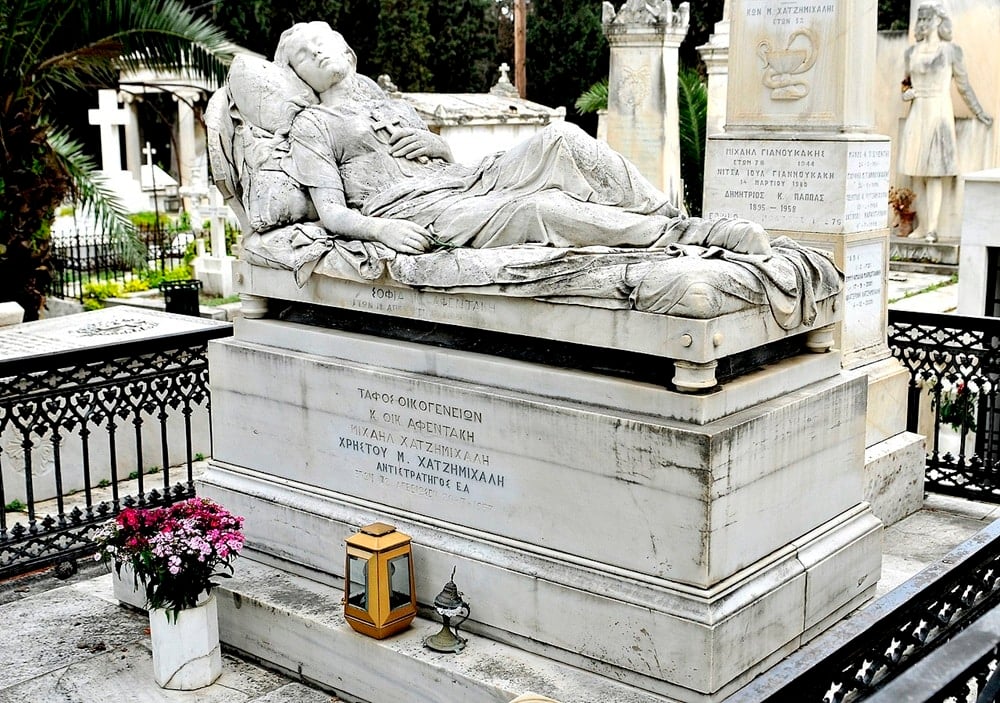

In the First Cemetery of Athens, among marble angels and silent laurels, lies the sculpture of The Sleeping Woman created by Giannoulis Chalepas. Carved from pure white marble, it depicts a young woman in eternal slumber. Her name was Sofia Afentaki, but the world remembers her now through the timeless artistry of the Greek artist.
Born in 1856 in Athens to a prominent family from Kimolos, Sofia lived a short life marked by beauty and grace. She died at just 17, a victim of tuberculosis, a common cause of death in the 19th century. Her death left her family in mourning, but it was her uncle, Georgios Economou Afentakis, one of the great benefactors of modern Greece, who sought a way to eternalize her spirit.
He turned to a rising artist of the time: Giannoulis Chalepas. A sculptor of immense talent and quiet torment, Chalepas had already begun making a name for himself when he was commissioned to craft a funerary monument for the young Sofia.

What he created would become not only one of the most beloved sculptures in Greek art but also a pivotal piece in his own troubled legacy.
The statue—simple, delicate, and heart-wrenchingly human—shows Sofia lying peacefully on a sculpted bed. Her features are soft, her body relaxed, as if caught in a moment of serene sleep rather than eternal rest.
Her head gently turns to the right, sinking into a richly detailed pillow, one hand resting lightly on the sheets, the other clutching a small cross to her chest. One knee is slightly bent, the sheets beneath her gently folded, as though moved by her final breath.

The genius of Chalepas lies in this quiet ambiguity: Is she dead, or merely sleeping? The marble doesn’t speak of grief or grandeur, but of stillness. There are no angels to lift her to heaven, no tragic symbolism. Only a girl, peacefully at rest.
At the time of its unveiling in the 1880s, the sculpture stunned viewers with its intimacy and realism. It marked a profound shift in Greek funerary art—from the symbolic and mythological to the deeply personal and emotional. It also cemented Chalepas’ reputation as a master of marble, even as his own life was soon overtaken by hardship and silence.
After periods of mental illness and exile from the art world, Chalepas was later rediscovered and recognized again. But his sculpture of Sofia—quiet, graceful, timeless—had already secured his place in history.
Today, the original statue of “The Sleeping Woman” is housed in the National Gallery of Greece, preserved as one of the finest examples of modern Greek sculpture. A faithful replica rests on the Afentakis family tomb in the First Cemetery of Athens, where thousands still come to see the girl who sleeps in marble.
She remains, in both places, a symbol of eternal beauty, stillness, and memory—her story etched in stone, her rest undisturbed.
